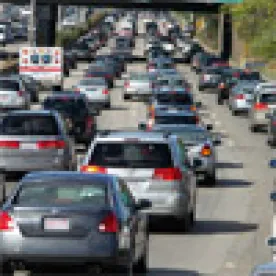When the fatal car crash involving a Tesla Model S sedan made headlines last fall, we posted about the accident and predicted that government authorities would classify the crash as being caused by driver error rather than an issue with the “Autopilot” system.
Our prediction turned out to be correct. The National Highway Traffic Safety Administration (NHTSA) was still investigating the incident when we first posted about it, but on January 19, NHTSA closed its preliminary evaluation, which found that driver error was responsible.
Still, the performance of Automated Driver Assistance Systems, or ADAS, is an area of intense regulatory interest, and it was therefore not surprising to see NHTSA’s Office of Defect Investigation deploy a special crash investigations team to reconstruct the accident.
Several news reports have characterized NHTSA as having “exonerated” or “cleared” Tesla of any wrongdoing in connection with the crash. Officially, NHTSA merely closed the investigation, noting that it reached no conclusion about whether a defect existed and retained its right to reopen the investigation later.
That said, NHTSA was clearly satisfied with the performance of Tesla’s ADAS system during the crash, which allowed the agency to close its investigation.
NHTSA Guidance on Future Crashes Involving ADAS
The NHTSA report provides useful guidance on how the agency — and certainly vendors of ADAS equipment — can properly assess future crashes involving ADAS systems.
First, NHTSA emphasized the Tesla ADAS system’s “state of the art” performance in detecting situations requiring automated braking events. Some crash events are almost impossible to detect, including so-called “Straight Crossing Path” incidents like the Florida crash. In the Florida accident, Tesla’s system did not detect the tractor-trailer that cut across the Tesla’s path. But because no other current systems can meaningfully detect these events, NHTSA did not fault Tesla’s system.
Second, NHTSA reinforced that a typical ADAS braking system still requires active driver monitoring. NHTSA spent several paragraphs analyzing the warnings provided by Tesla and other manufacturers that remind drivers to use automated braking systems as a driving aid, not a crutch. Tesla’s disclosures seemed less detailed than NHTSA would have liked, but NHTSA still determined they were reasonable, particularly based on Tesla’s post-incident improvements.
Lastly, NHTSA did not seem concerned that Tesla had deployed safety improvements after the accident in the ordinary course, as opposed to doing so as part of a “safety bulletin” or “recall.” Safety agencies tend to be wary of companies that provide supplemental safety information outside the context of a formal recall, sometimes labeling these efforts unacceptable “stealth recalls.” With ADAS systems, however, over-the-air updates are key to improving the algorithms that drive their functionality. As a result, it would be imprudent for companies to withhold routine safety improvements or for safety agencies to demand a recall every time a company could improve safety at no additional consumer cost.
All in all, NHTSA’s investigation report provides a useful window into how NHTSA may investigate ADAS-involved crashes and the factors that will inform NHTSA’s thinking as to whether a defect is present. In an arena evolving as quickly as automated vehicle technologies, this is good news for auto suppliers, who likely appreciate any guidance they can get.




 />i
/>i
